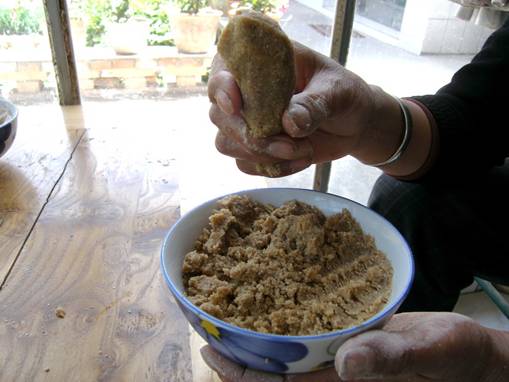Read more stories on China's Reform and Opening up
Four years ago, in Doilungdeqen County near Lhasa, 235 farmers formed a cooperative to market fresh vegetables and flowers in Lhasa and nearby areas. Their produce, grown at 3,700 meters above sea-level, sells like hot cakes, partly due to the environmental-friendly cultivation methods.
 |
|
Zanba or Tsampa (roasted highland barley) used to be the staple food of Tibet. Vegetables were a luxury.
|
On the way to visit the cooperative the driver told us that when he moved to Lhasa 30 years ago, there was only one grocery store, one barber shop, one public bathing house and one restaurant – all state-owned. The city's roads were full of potholes. Back then, he said, drivers were popular with the girls because they were well-traveled and could bring back scarce commodities like fresh fruit and vegetables from business trips. "In those days, when we traveled by plane, our bags were crammed with cucumbers and tomatoes," the driver said. "People were grateful to get their hands on a small bunch of green vegetables."
It is very different today. Vegetables are on the dinner table even in the coldest season. The area around Lhasa has more than 10,000 mu (15 mu=1 hectare) of greenhouse space growing vegetables.
When we arrived at the environmental-friendly vegetable growing base, farmers were busy removing overnight quilts from the greenhouses to let the sunshine in.